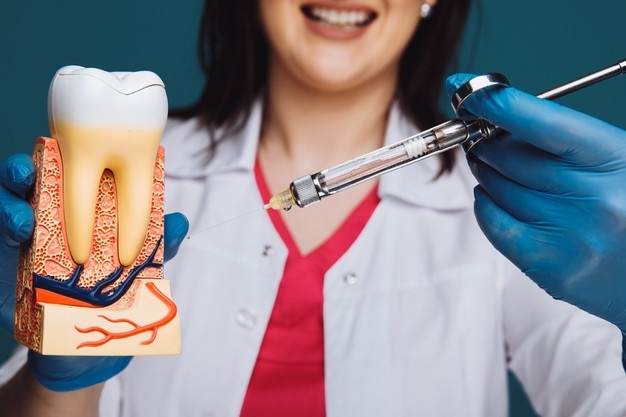Know Every Information Related To Root Canal Treatment

Dental Emergencies – Tips To Deal With Various Situations
November 11, 2021
Cosmetic Dentistry: Definition & Benefits
December 3, 2021A root canal is a dental procedure in which the soft center of the tooth, the pulp, is removed. Nerves, connective tissue, and blood arteries make up the pulp, which helps the tooth grow. Here at West Olds Dental, we have seen that a lot of people have inhibitions about going for this treatment due to the lack of knowledge. Keeping this in mind, we have decided to provide our readers with a blog that will discuss certain topics related to root canal treatment.
When Do You Need To Go For Root Canal?
When the soft inner component of a tooth, known as the pulp, is wounded, inflamed, or infected, a root canal is performed. Even if the pulp is dead, the crown of the tooth, the area visible above the gums, can stay intact. The greatest technique to keep a tooth’s structure is to remove injured or infected pulp.
Some of the common factors that can lead to damage to the tooth pulp are:
- Severe deterioration as a result of a cavity that hasn’t been treated
- A crack or chip in a tooth
- Going through numerous dental procedures can also be the reason
- A tooth injury (you can harm a tooth if you get smacked in the mouth; even if the tooth isn’t cracked, the pulp can still be damaged)
The most frequent symptoms of the injured pulp include tooth discomfort, swelling, and a burning feeling in the gums. To confirm the diagnosis, your dentist will examine the sore tooth and take X-rays. If your dentist believes you need a root canal, he or she may send you to an endodontist.
Find Out The Steps Of Root Canal Treatment
The root canal treatment needs to be performed at the dentist’s office. When you arrive for your appointment, a technician will lead you to a treatment room, assist you in settling into a chair, and drape a bib around your neck to protect your clothing from stains.
- A small amount of numbing medicine will be applied to your gum near the damaged tooth by the dentist. A local anesthetic will be injected into your gums once it has taken effect. It’s possible that you’ll feel a strong pinch or a burning feeling, but it’ll go away fast. You’ll be awake throughout the surgery, but the anesthesia will keep you pain-free.
- The endodontist or general dentist will make a small opening in the crown of your tooth while it is numb. The specialist will carefully remove the contaminated or damaged pulp using special tools called files once it has been exposed. They’ll take extra care to clean up all of your tooth’s channels (canals).
- The dentist may apply a topical antibiotic to the area after the pulp has been removed to ensure that the infection is gone and to prevent reinfection. The dentist will fill and seal the tooth using a sealer paste and a rubber-like material called gutta-percha after the canals have been cleaned and sterilized. Oral antibiotics may also be prescribed.
- The dentist will then use a soft, temporary substance to fill the little opening in the top of the tooth. This sealant helps to protect the canals from saliva damage.
Aftercare Tips
When the numbing medication wears off, your teeth and gums may feel sore. It’s also possible that your gums will swell. Most dentists will prescribe over-the-counter pain relievers such acetaminophen (Tylenol) or ibuprofen to alleviate these symptoms (Advil). If the discomfort becomes unbearable or persists for longer than a few days, contact your dentist.
The day after the surgery, you should be able to resume your normal routine. Avoid chewing with the injured tooth until it has been properly filled or a crown has been set on top of it.
Within a few days of the root canal, you’ll see your normal dentist. They’ll do X-rays to make sure there’s no infection. They’ll also use a permanent filling to replace the temporary one.
The dentist may install a permanent crown on the tooth if you choose. Crowns are tooth-like prosthetics made of porcelain or gold. The lifelike appearance of a crown is one of its advantages.
It could take a few weeks for you to adjust to how your tooth feels following the surgery. This is quite normal and nothing to be concerned about.
We hope that you now have a better understanding of the topic. In case you are looking for the best root canal treatment in Street Olds, Alberta, and nearby, book an appointment at West Olds Dental now.



